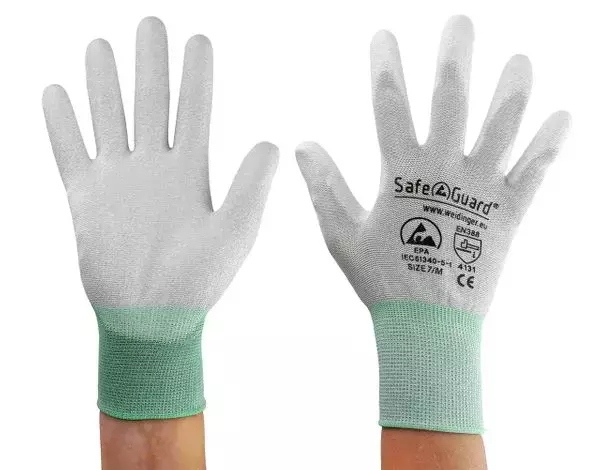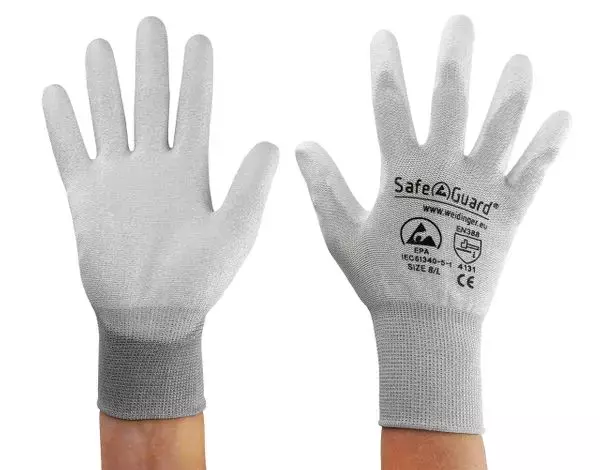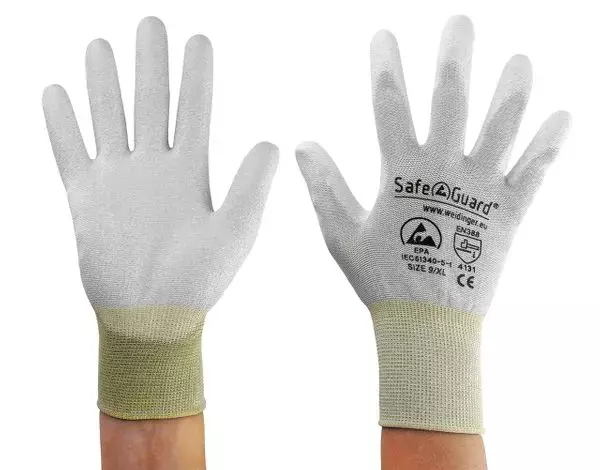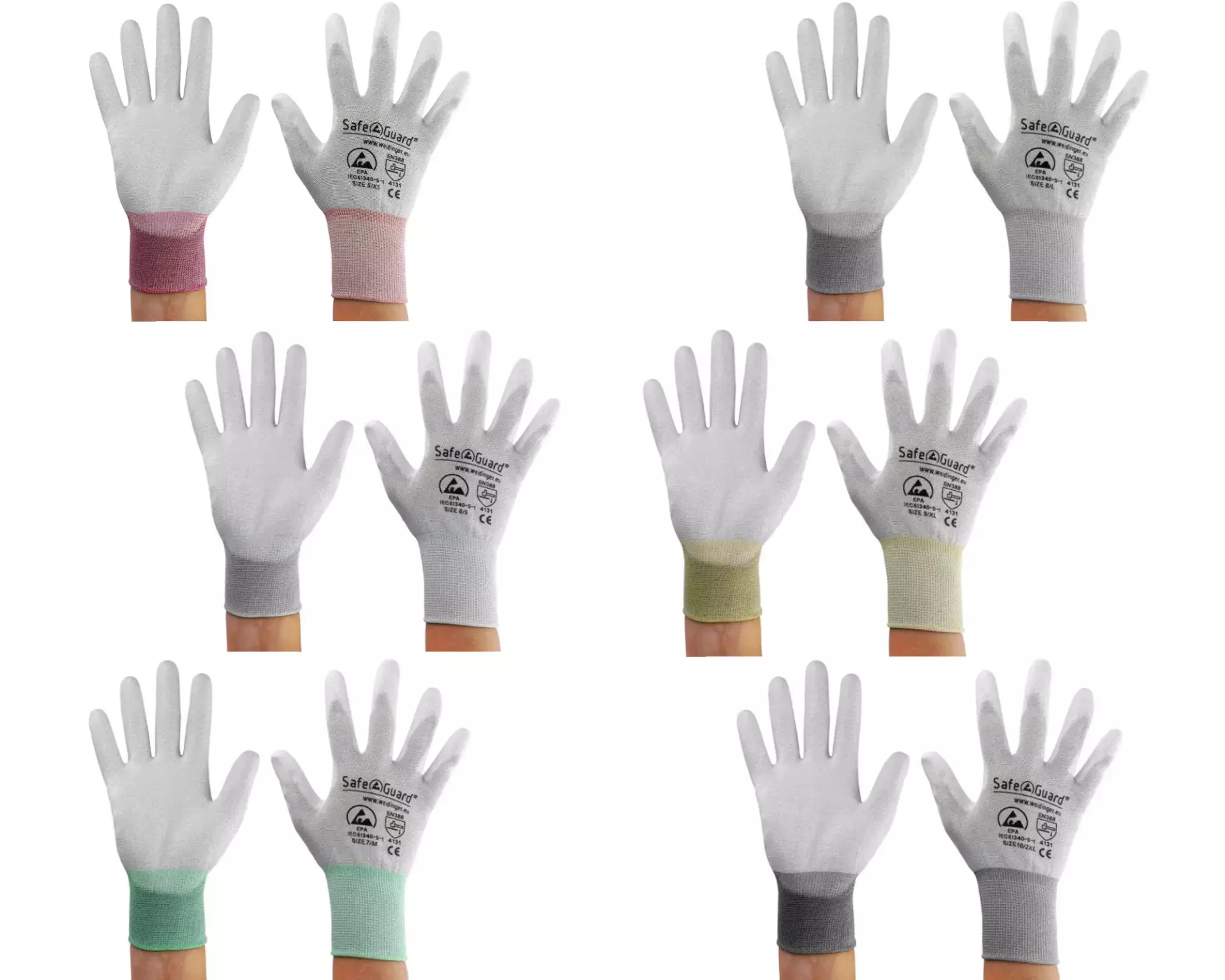

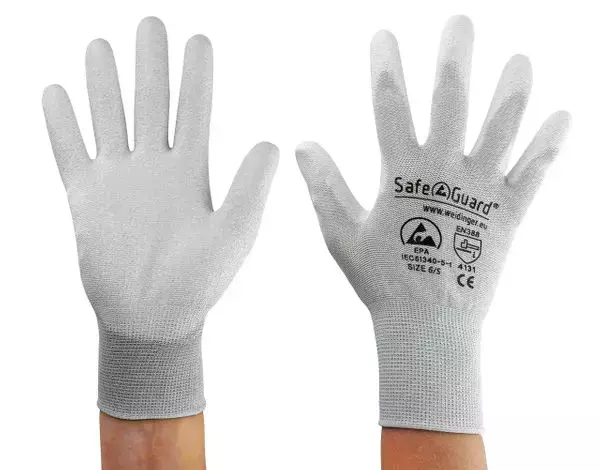
Features You'll Love
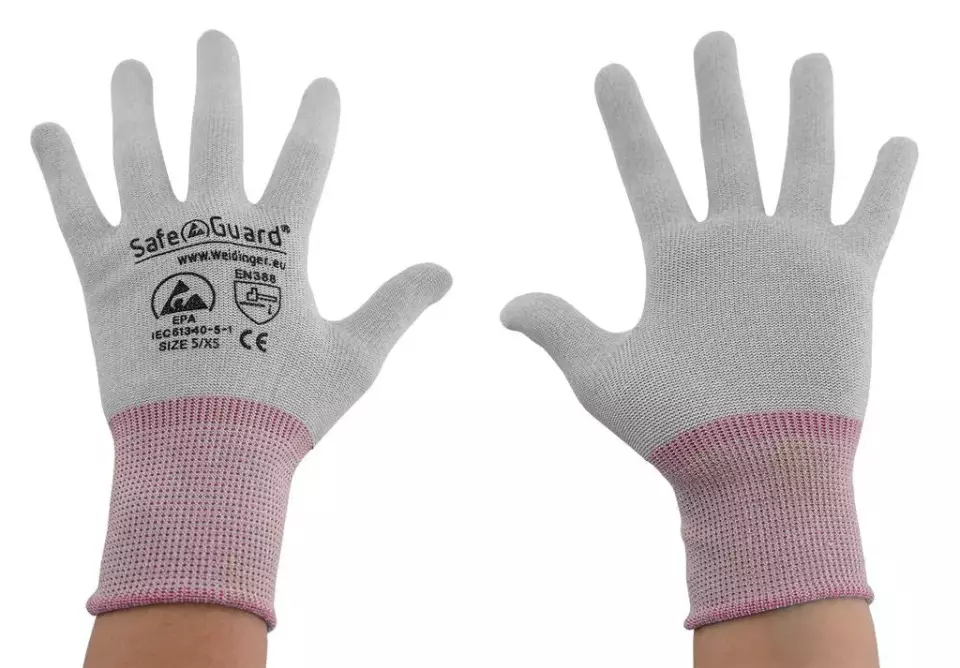
Cuff Style · Knit
Determines how the glove secures around the wrist, affecting fit, protection from debris, and ease of putting gloves on and taking them off.

Palm Material · Polyurethane (PU)
Coating Material · Polyurethane (PU)
The material used on the palm side of the glove, affecting grip, durability, protection level, and comfort during use.
The material applied to glove surfaces to enhance grip, protection, and durability for specific work conditions and hazards.

EN 388 · Tear Resistance Level 3
EN 61340-5-1 · Electrostatic Discharge Antistatic
Offers strong resistance against ripping, making the material durable against snags and tears.
Guards the product’s sensitive electronics against damage from static electricity. This protection during manufacturing and handling prevents hidden component failure, ensuring your device works reliably and has a longer operational life.
Safeguard
ESD Glove, Coated Palms (Grey)
ESD Glove, Coated Palms (Grey)
4.8 / 5
12,23 €
Choose size
Shipping fee is 7,95 € for orders under 80,00 €
Features You'll Love

Cuff Style · Knit
Determines how the glove secures around the wrist, affecting fit, protection from debris, and ease of putting gloves on and taking them off.

Palm Material · Polyurethane (PU)
Coating Material · Polyurethane (PU)
The material used on the palm side of the glove, affecting grip, durability, protection level, and comfort during use.
The material applied to glove surfaces to enhance grip, protection, and durability for specific work conditions and hazards.

EN 388 · Tear Resistance Level 3
EN 61340-5-1 · Electrostatic Discharge Antistatic
Offers strong resistance against ripping, making the material durable against snags and tears.
Guards the product’s sensitive electronics against damage from static electricity. This protection during manufacturing and handling prevents hidden component failure, ensuring your device works reliably and has a longer operational life.
Product description
The product description has not been specified
